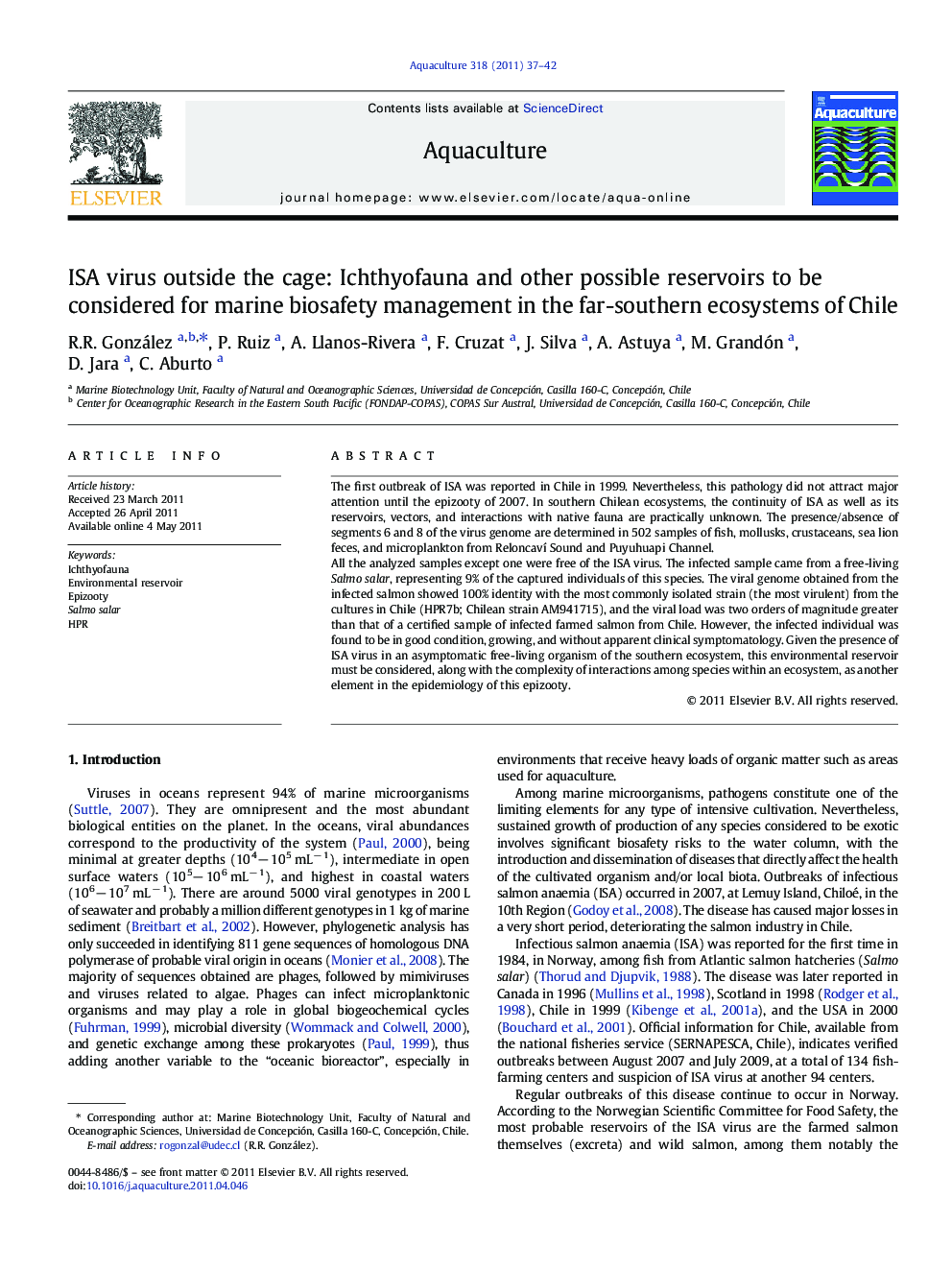| کد مقاله | کد نشریه | سال انتشار | مقاله انگلیسی | نسخه تمام متن |
|---|---|---|---|---|
| 2422897 | 1552906 | 2011 | 6 صفحه PDF | دانلود رایگان |

The first outbreak of ISA was reported in Chile in 1999. Nevertheless, this pathology did not attract major attention until the epizooty of 2007. In southern Chilean ecosystems, the continuity of ISA as well as its reservoirs, vectors, and interactions with native fauna are practically unknown. The presence/absence of segments 6 and 8 of the virus genome are determined in 502 samples of fish, mollusks, crustaceans, sea lion feces, and microplankton from Reloncaví Sound and Puyuhuapi Channel.All the analyzed samples except one were free of the ISA virus. The infected sample came from a free-living Salmo salar, representing 9% of the captured individuals of this species. The viral genome obtained from the infected salmon showed 100% identity with the most commonly isolated strain (the most virulent) from the cultures in Chile (HPR7b; Chilean strain AM941715), and the viral load was two orders of magnitude greater than that of a certified sample of infected farmed salmon from Chile. However, the infected individual was found to be in good condition, growing, and without apparent clinical symptomatology. Given the presence of ISA virus in an asymptomatic free-living organism of the southern ecosystem, this environmental reservoir must be considered, along with the complexity of interactions among species within an ecosystem, as another element in the epidemiology of this epizooty.
Journal: Aquaculture - Volume 318, Issues 1–2, 27 July 2011, Pages 37–42